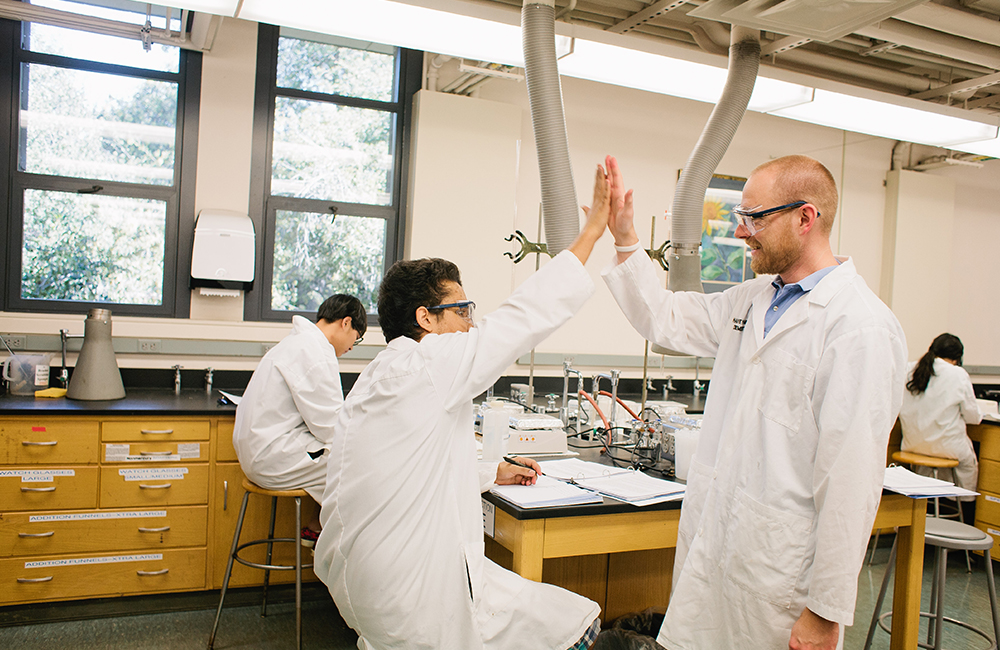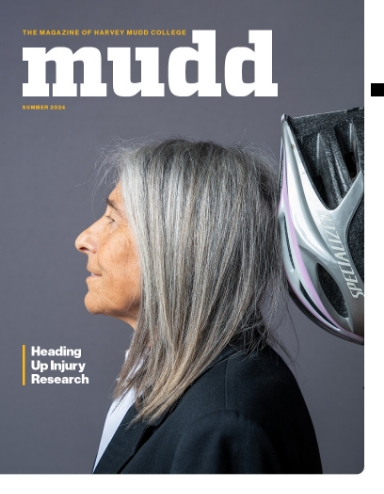NSF Funds New NMR in Chemistry Dept.
August 10, 2017
To take full advantage of its innovative chemistry curriculum and maintain the position as one of the country’s leading undergraduate chemistry programs, the Harvey Mudd College Department of Chemistry has undertaken a successful, comprehensive instrumentation replacement and acquisition plan for the last three years. Through the generosity of foundations, alumni and friends, the department has added over $1.5 million of instrumentation to be used throughout the chemistry curriculum as well as in its research program.
A critical component of that replacement plan involved the acquisition of a new high-field nuclear magnetic resonance (NMR) spectrometer. Like a smartphone that can no longer support the latest iOS updates, the department’s current NMR is no longer supported by the manufacturer. With replacement parts no longer available and a concern that the instrument could soon become nonfunctional, chemistry professors David Vosburg, Adam Johnson and Katherine Van Heuvelen put together a successful proposal for a $331,285 National Science Foundation grant to replace the instrument with a new one (a Bruker NEO 400 MHz NMR spectrometer console with a 24-tube autosampler, to be exact), which will allow for expanded research capability and improved student experience.
The new instrument reflects Harvey Mudd College’s commitment to sustainability and environmentally responsible instrument upgrades. “We will continue to use the same 400 MHz magnet, since that part of our current instrument works fine,” says Vosburg. “Everything else about the instrument, including all of the controlling electronics and the computer interface, will be replaced.”
“Nuclear magnetic resonance is the more sophisticated, chemical cousin to magnetic resonance imaging (MRI),” explains Hal Van Ryswyk, John Stauffer Professor of Chemistry. “Using NMR, we can step through a molecule, atom by atom, to determine composition and structure. This is one of the most powerful techniques available in chemistry to determine molecular structure.”
Among the most exciting features of the new NMR is an autosampler, which can insert, analyze and process samples automatically. “That should enable much more efficient use of instrument time for research, for teaching labs and for outreach efforts,” Vosburg says. “The autosampler will also make it possible for Prof. Lelia Hawkins, an atmospheric chemist, to analyze aerosol particles from the air using the NMR.”
In addition to saving time, the new equipment will be accessible to a wider community than was previously possible, including high school students in the Upward Bound program and collaborators at Mt. San Antonio College, who are beneficiaries of Harvey Mudd’s commitment to the community.
Many more Harvey Mudd students will also have access to the new NMR. “For years, students have enjoyed hands-on access to the NMR spectrometer starting in their sophomore year,” Vosburg says. “With this instrument upgrade, even first-year students will be able to use the instrument.”
The new instrument represents the College’s third generation of high-field NMR spectroscopy.
Vosburg says the upgrade of the NMR spectrometer, which he considers to be the most important instrument in the chemistry department, “will substantially modernize students’ laboratory experiences and will enhance our ability to examine molecular structures for decades into the future.”
